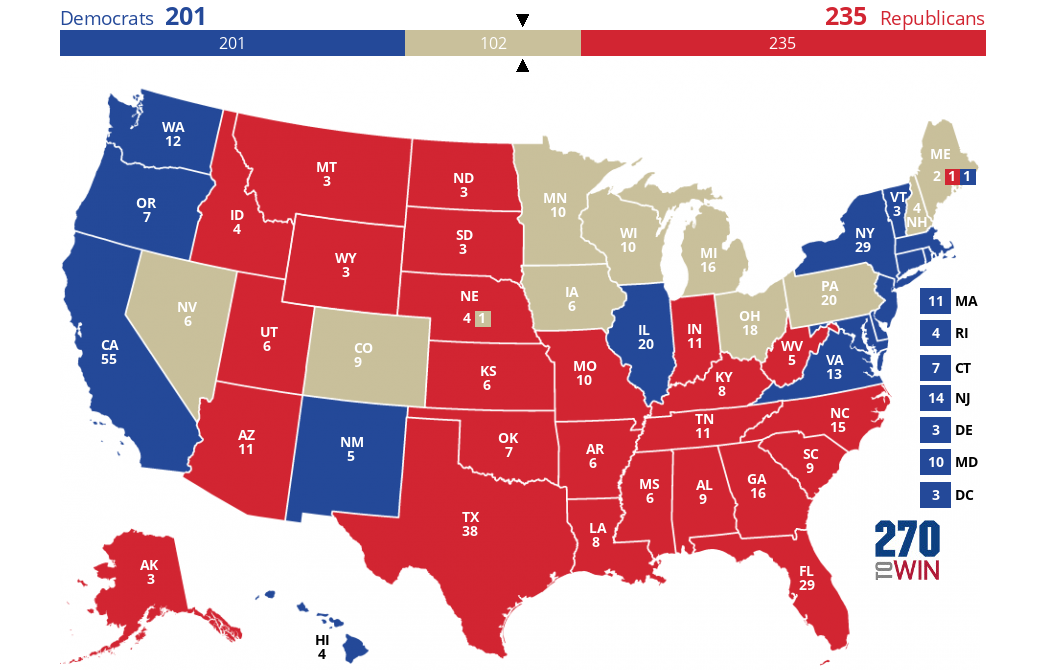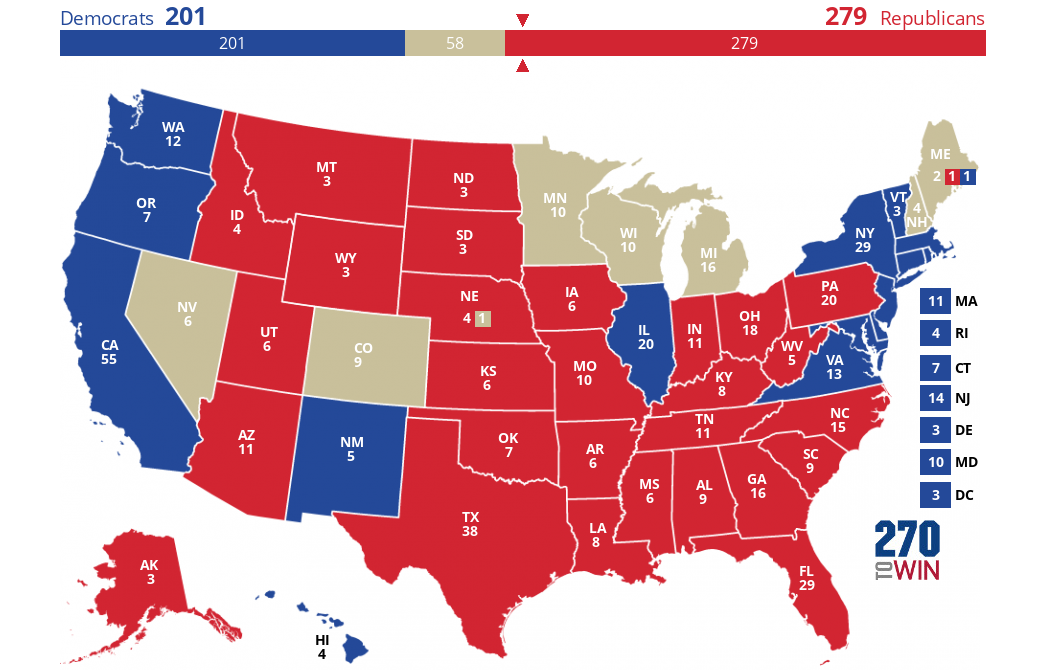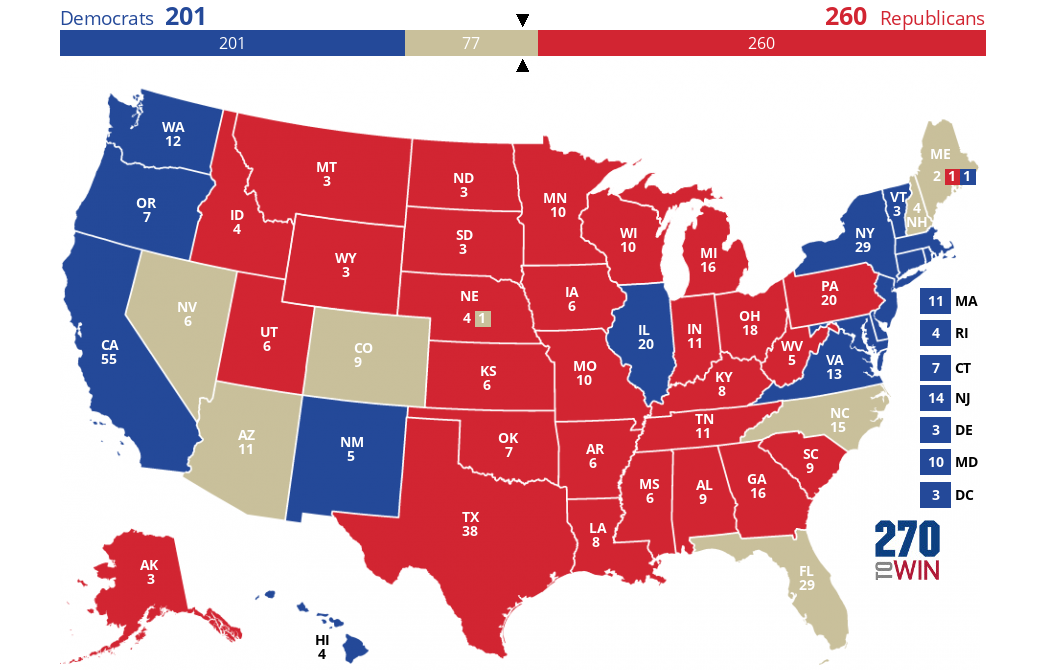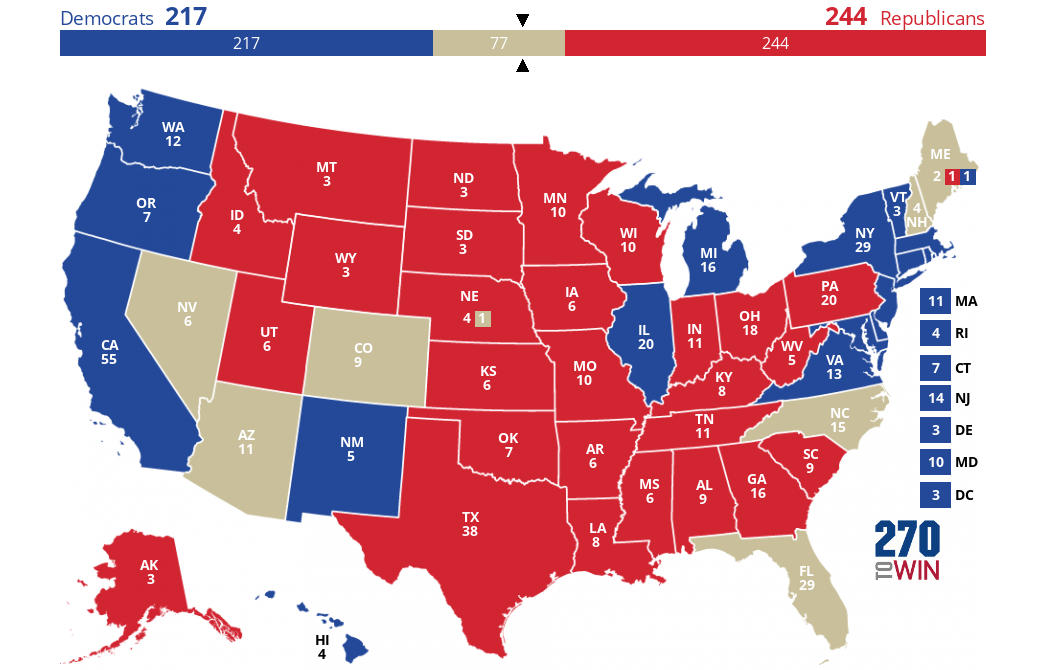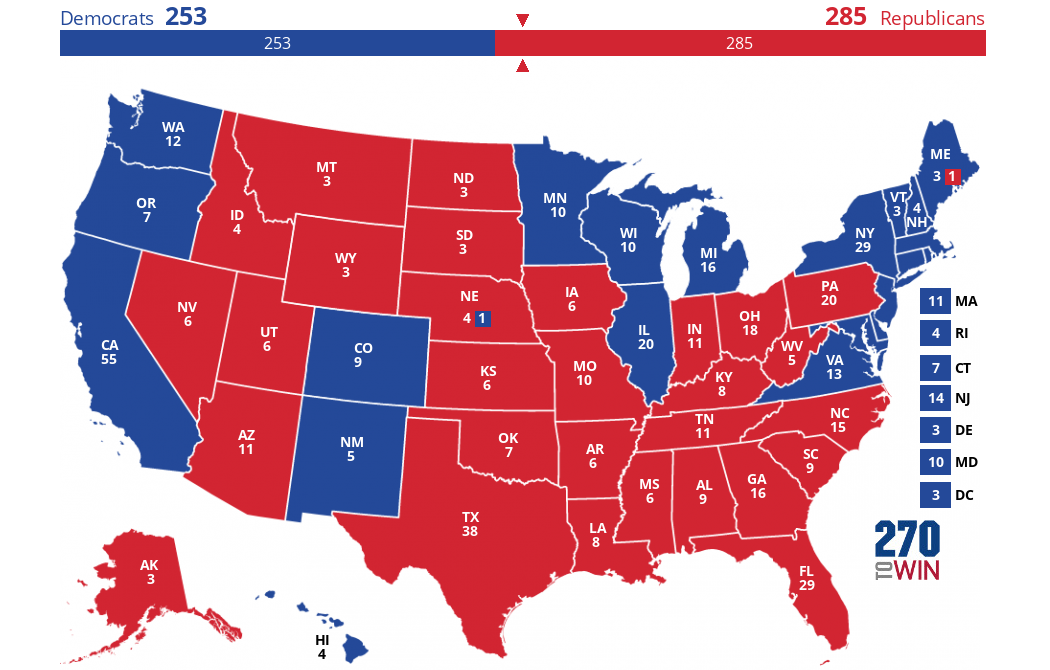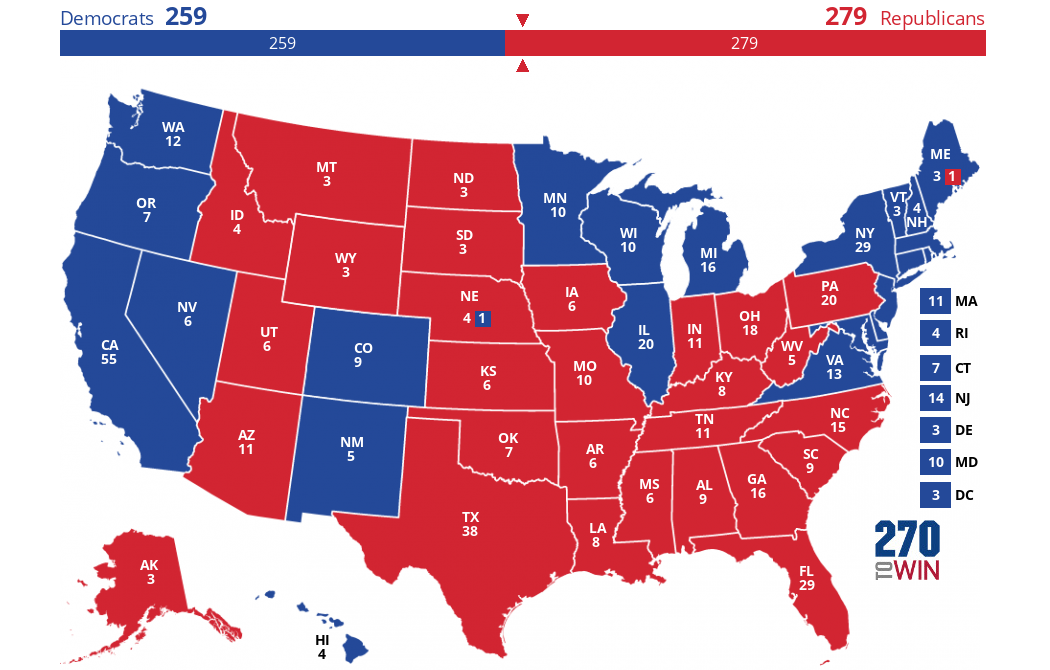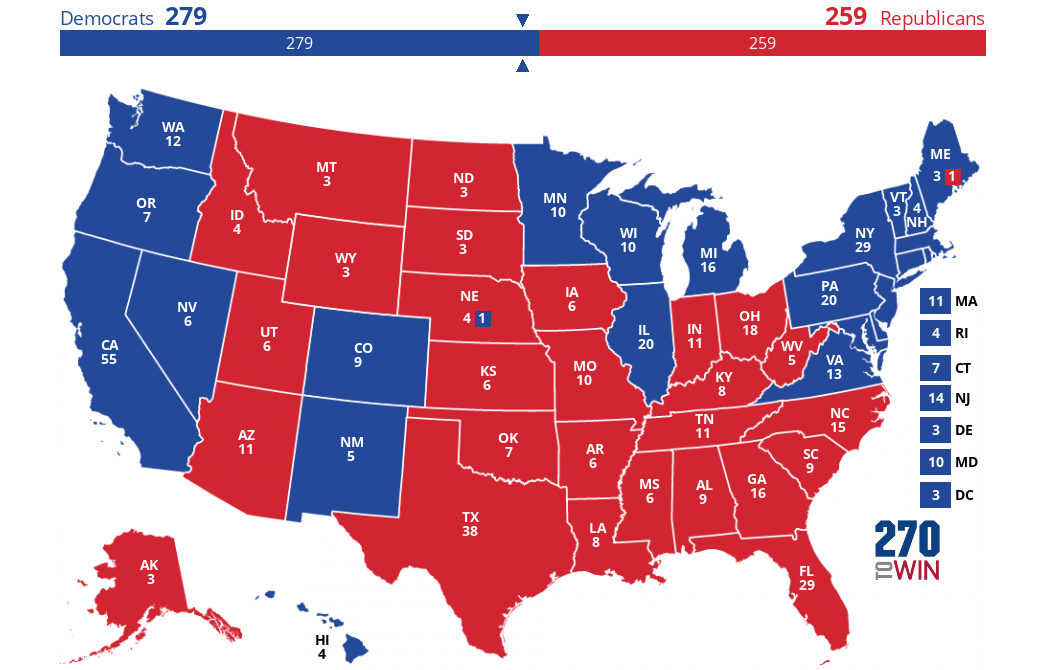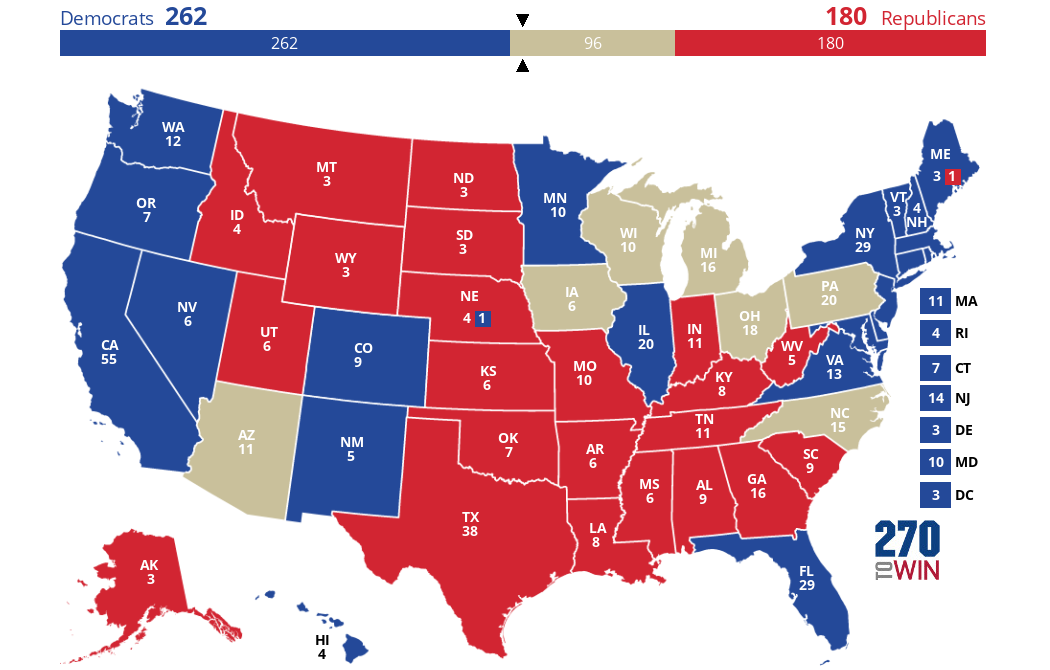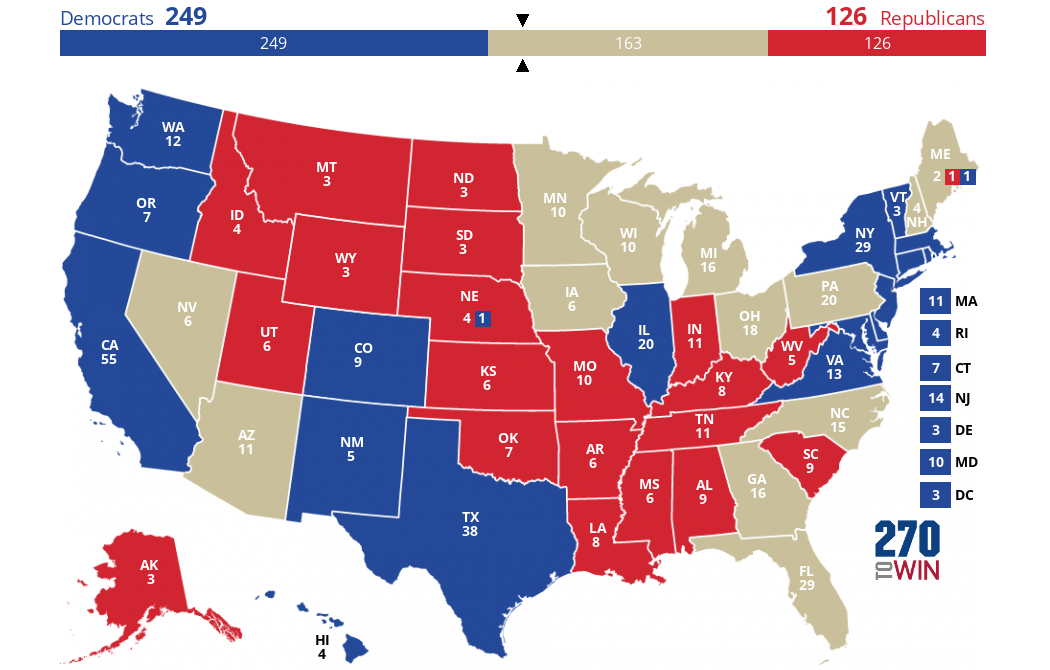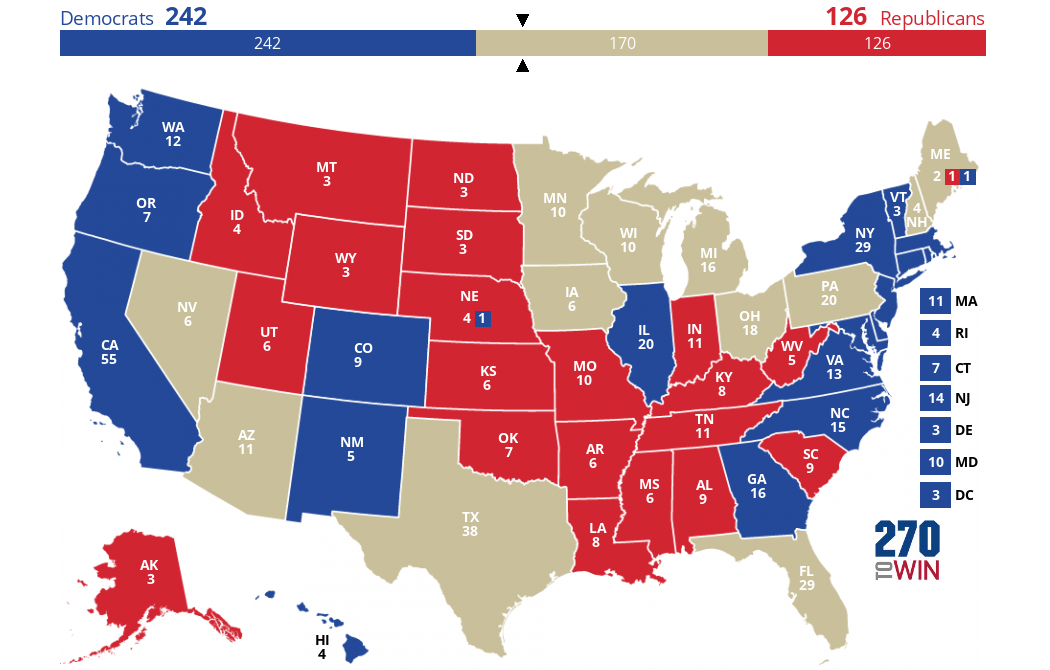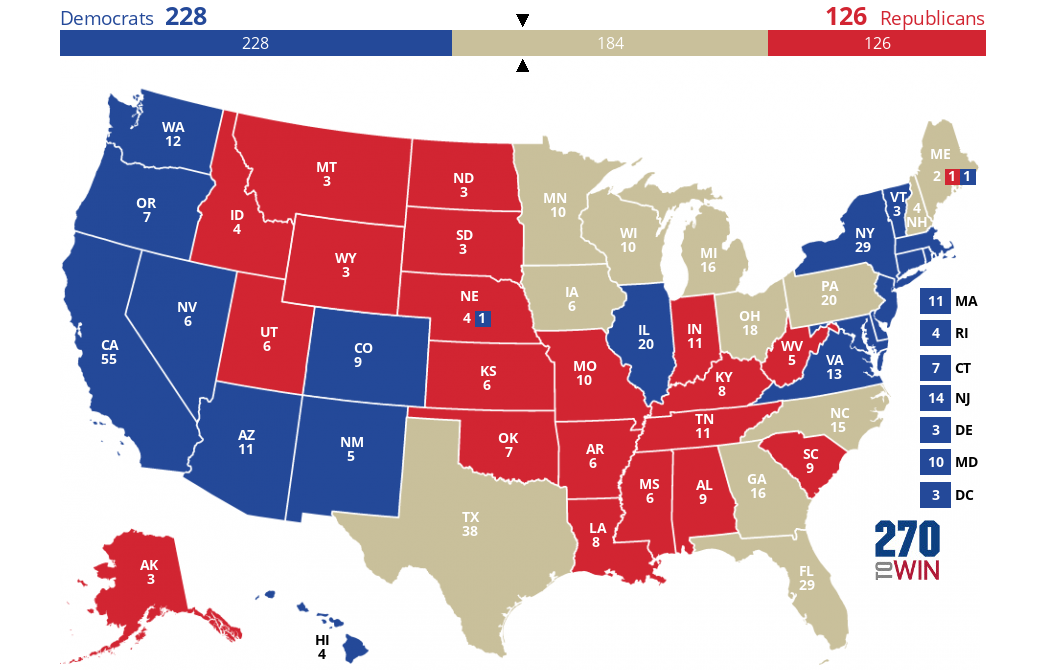The 3 most likely paths to victory for Biden and Trump, in maps
How Trump wins
1. Florida, Florida, Florida (+ southern states + a little more)
Presenting: Trump’s most logical path to victory.
I know we’ve been here before, but Florida is very clearly emerging as the most pivotal state in this presidential election — both thanks to its 29 electoral votes (second only among the swing states to Texas) and to its consistent razor-thin margins (it’s been decided by about 1 percentage point in many recent elections and is a virtual tie right now).
One of the big new developments in the 2020 race is the competitiveness of some red states in the southern half of the country. Democrats have high hopes that their efforts to at last turn Arizona, Georgia and Texas blue could arrive sooner than expected. But what if it’s a bust? And what if Trump holds all of them and nips Florida?
Here’s how that would set up, with other close races undecided, based using 270 To Win maps:
Were Trump to win Florida and hold his 2016 ground across the southern half of the country, Democrats’ path to victory would be significantly narrowed, though hardly prohibitive. From there, if Trump also holds the two closely polling Midwestern states he won by eight-plus points in 2016 (Iowa and Ohio), adding just Michigan or Pennsylvania alone would deliver Trump a win. Adding Minnesota or Wisconsin alone would also put him at 269 electoral college votes — enough for a tie.
Here’s what that would look like adding just Iowa, Ohio and the 2016 tipping point state that is currently polling the closest, Pennsylvania, going for Trump:
It bears emphasizing: Democrats lead in the Real Clear Politics polling averages in almost all of the states in the undecided column on this map, including Michigan and Pennsylvania (Iowa and Ohio are pretty pure toss-ups). But losing Florida and other southern states that have been red in recent years would mean Democrats can’t avoid too many big surprises in other states. And Pennsylvania is polling closely enough to make things interesting.
2. Trump over-performs in the Midwest/Rust Belt — again
What if the southern part of the country is in doubt, but Trump sweeps the key states further north?
Trump has focused his late-campaign push on the states that delivered him the presidency — specifically, Michigan, Pennsylvania and Wisconsin, all of which were decided by less than a point in 2016.
The polls in these states aren’t generally as close as in 2016 this time around. That’s particularly the case in Michigan (Biden +8.6), but the overall polls in Pennsylvania are somewhat close (Biden +3.5), as are some high-quality polls in Wisconsin (Biden +6.4).
So what if Trump somehow sweeps these three states again, along with Iowa and Ohio? Here’s what the map would look like:
In this scenario, Trump could seal the win by getting the next 20 electoral votes via many different methods, including:
- Winning only Florida (29 electoral votes)
- Winning previously red states Arizona (11) and North Carolina (15)
- Stretching his Midwest wins to Minnesota (10), where he lost by just 1.5 points last time, and adding another larger, consistently red state in Arizona or North Carolina
Even if Michigan is out of reach, here’s what it would look like:
From there, Trump could win by just adding Florida or Arizona and North Carolina.
Were Trump to win these three all-important states again — which is a big “if,” yes — he would have significantly more paths to victory than Biden. Winning even two of them would also greatly improve his lot. The polling misses of 2016 might not be replicable, especially given pollsters have refined their methods and we have more quality polls in these states than we did then, but it’s worth considering the possibility.
3. The polls wind up being off
Picking up on the above, let’s say, for argument’s sake, that the surprises aren’t relegated to those states. What if the polls wind up being off universally by five points? What if there’s something to the shy-Trump-voter theory (of which I and many others who analyze elections are skeptical). Or what if there were a significant shift in the final days for one reason for another? Where would that leave us?
A pretty close race — and quite possibly a Trump win.
Here’s how that five-point shift would look, based upon current polling averages:
The above map is particularly remarkable when you consider that Biden’s average lead in the national polls stands around seven points. Even if you universally shift the polls less than that, you approach or even enter a scenario in which Trump wins.
In fact, that’s also the case if you shift things just four points across-the-board (in this scenario, only Nevada turns blue):
And now, for the more likely scenario in which Biden wins.
How Biden wins
1. Just holding his ground
As the above item demonstrates, Biden basically just needs to hold the states in which he’s showing a significant lead.
And even if you shift the polls universally by three points — still less than his national lead, but a significant shift across the board — Pennsylvania remains in his column and he wins:
This, as with the Florida scenario for Trump, is the most logical and direct path to victory — though in Biden’s case it doesn’t require picking off states in which he currently trails.
2. Florida, Florida Florida (again)
And now for how Florida could even more convincingly turn things in Biden’s favor.
Were he to win it and also hold the closer blue states from 2016 (including Minnesota, Nevada and New Hampshire), he’d already be at 262 electoral votes:
From that point, Biden would only have to win one other bigger, close state: Arizona, Michigan, North Carolina, Ohio, Pennsylvania or Wisconsin.
It certainly reinforces how truly pivotal Florida is. Trump winning it gives him hope; Biden winning it makes it pretty difficult for him to lose.
3. Picking off a prize
None of the above maps contemplates a few things that could well happen but would have been pretty unthinkable even four years ago: A Democrat winning Arizona, Georgia or Texas. But all three states are polling very closely. It’s Biden +2.2 in Arizona, tied in Georgia and Trump +2.6 in Texas. and So what if Biden pulls off a win in one or more of them?
Texas’s 38 electoral votes would be all but decisive, putting Biden at 249 electoral votes even if you only give him the other electoral votes which seem to very be likely to be in his column, including Colorado (which Democrats won by five points in both 2012 and 2016):
From there, he would need only 21 out of 163 electoral votes — about 13 percent of the remaining total.
Georgia would be another big pull — especially since it also might suggest a Biden win in neighboring North Carolina (and possibly even Florida). Here’s what would happen if Biden took the first two southeastern states:
At that point, Biden would need 28 out of the remaining 170 electoral votes — about 16 percent. Adding Florida would seal the deal, but there are many other paths, too.
And finally, Arizona. As with Georgia, it’s somewhat tough to see Biden winning Arizona but not a neighboring state, Nevada, which also has a significant Mormon population. So let’s, for argument’s sake, put both in his column:
These give Biden less of an obvious edge in the race than the Georgia/North Carolina or Texas scenarios, given they are smaller electoral-vote prizes and they come in a region with fewer similar states that might also tip in his favor. But even here, Biden would only need to win 42 of the remaining 184 electoral votes — about 23 percent. Trump could hold all the three Southern states that tilt Republican — Georgia, North Carolina and Texas — and Biden would still have a slight edge, with Florida undecided.
It would be the least favorable big flip of a traditionally red state for Biden, but still a big one. And the math, as with most of these scenarios, is easier for him — though hardly prohibitive for Trump.

